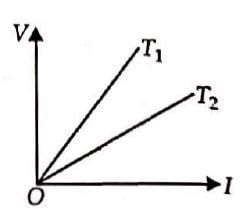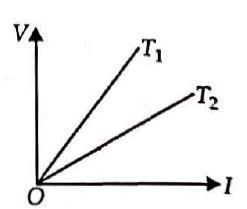NEET Exam > NEET Tests > NCERTs at Fingertips: Textbooks, Tests & Solutions > Test: Ohm's Law (NCERT) - NEET MCQ
Test: Ohm's Law (NCERT) - NEET MCQ
Test Description
5 Questions MCQ Test NCERTs at Fingertips: Textbooks, Tests & Solutions - Test: Ohm's Law (NCERT)
Test: Ohm's Law (NCERT) for NEET 2025 is part of NCERTs at Fingertips: Textbooks, Tests & Solutions preparation. The Test: Ohm's Law (NCERT) questions and answers have been
prepared according to the NEET exam syllabus.The Test: Ohm's Law (NCERT) MCQs are made for NEET 2025 Exam. Find important
definitions, questions, notes, meanings, examples, exercises, MCQs and online tests for Test: Ohm's Law (NCERT) below.
Solutions of Test: Ohm's Law (NCERT) questions in English are available as part of our NCERTs at Fingertips: Textbooks, Tests & Solutions for NEET & Test: Ohm's Law (NCERT) solutions in
Hindi for NCERTs at Fingertips: Textbooks, Tests & Solutions course. Download more important topics, notes, lectures and mock
test series for NEET Exam by signing up for free. Attempt Test: Ohm's Law (NCERT) | 5 questions in 5 minutes | Mock test for NEET preparation | Free important questions MCQ to study NCERTs at Fingertips: Textbooks, Tests & Solutions for NEET Exam | Download free PDF with solutions
Detailed Solution for Test: Ohm's Law (NCERT) - Question 1
Test: Ohm's Law (NCERT) - Question 2
The voltage V and current. I graphs for a conductor at two different temperatures T1 and T2 are shown in the figure.

The relation between T1 and T2 is

The relation between T1 and T2 is
Detailed Solution for Test: Ohm's Law (NCERT) - Question 2
Test: Ohm's Law (NCERT) - Question 3
A wire of resistance 4Ω is used to wind a coil of radius 7cm. The wire has a diameter of 1.4mm and the specific resistance of its material is 2 × 10−7Ωm. The number of turns in the coil is
Detailed Solution for Test: Ohm's Law (NCERT) - Question 3
Test: Ohm's Law (NCERT) - Question 4
A cylindrical rod is reformed to half of its original length keeping volume constant. If its resistance before this change were R, then the resistance after reformation of rod will be
Detailed Solution for Test: Ohm's Law (NCERT) - Question 4
Test: Ohm's Law (NCERT) - Question 5
A wire with 15 Ω resistance is stretched by one tenth of its original length and volume of wire is kept constant. Then its resistance will be
Detailed Solution for Test: Ohm's Law (NCERT) - Question 5
|
257 docs|234 tests
|
Information about Test: Ohm's Law (NCERT) Page
In this test you can find the Exam questions for Test: Ohm's Law (NCERT) solved & explained in the simplest way possible.
Besides giving Questions and answers for Test: Ohm's Law (NCERT), EduRev gives you an ample number of Online tests for practice








 ( ∴ Volume remains constant)
( ∴ Volume remains constant)


 (using (i))
(using (i))
 ⇒
⇒ 





















